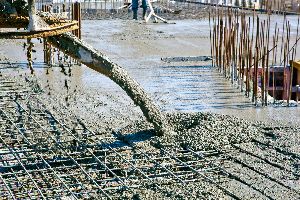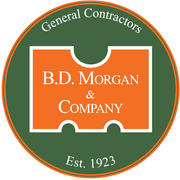The Importance of Steel Rebar in Industrial Concrete Design

These days, the commercial/industrial construction industry tends to forgo the wooden timbers of decades past and opt for concrete as a strong structural material. From foundations to support beams and columns, concrete helps form strong structures that last for generations. However, without steel rebar or “reinforcing bar” inside of it, concrete is susceptible to premature failure and deterioration. If you’re interested in learning more about the advantages of this industrial design element, the following guide can help.
Why Is Steel Rebar So Important for Concrete Applications?
Concrete is a hardened mixture of sand, gravel, cement, and water, among other additives. This building material is very strong in compression but, when subjected to tensile forces (as structural elements are), may begin to crack under the intense stress of the structure's weight over years of service. This could cause chunks of concrete to shift or even fall away, leading to serious concerns about the building or slab and its ability to support the immense loads it experiences. However, when wet concrete is poured on and around a steel reinforcing bar, it hardens and molds to this structural element. The steel rods feature small ridges that allow the concrete to grip the surface and remain in place. Rebar enhances the tensile strength and lifespan of the concrete, making it less prone to breakage. The steel, which is very strong in tension, helps make up for some of the concrete's natural deficiencies and will remain strong even if cracks develop in the slab, beam, or other concrete element, helping to prevent the structure from failing.
How Is It Used?

Steel rebar comes in various thicknesses, so you can choose different sizes for different applications and needs. For example, thicker rebar may be used in slim concrete support beams, which are more prone to breakage. Thinner rebar may be arranged in a grid for concrete floors and walls, ensuring that the surface stays intact.
When laid in grids, rebar must be cut and tied together so that every square formed by the grid is equal in size. This way, the weight of the concrete and other building materials is distributed evenly across the entirety of the surface. When pouring concrete around the rebar, engineers and contractors must be careful to cover every inch of the metal since any bare spots will leave the steel vulnerable to corrosion from moisture in the air and soil.
If you’re looking for an industrial design/build contractor to ensure your building is safe and strong, rely on B. D. Morgan & Company of Middletown, OH. They have nearly a century of experience carrying out commercial and industrial construction services, including thousands of concrete projects, and they work on projects of all sizes. They pride themselves on personalized service that sticks to each client’s needs and budget. To learn more about their work, visit their website, or call (513) 423-9494 to request a quote.
About the Business
Have a question? Ask the experts!
Send your question

